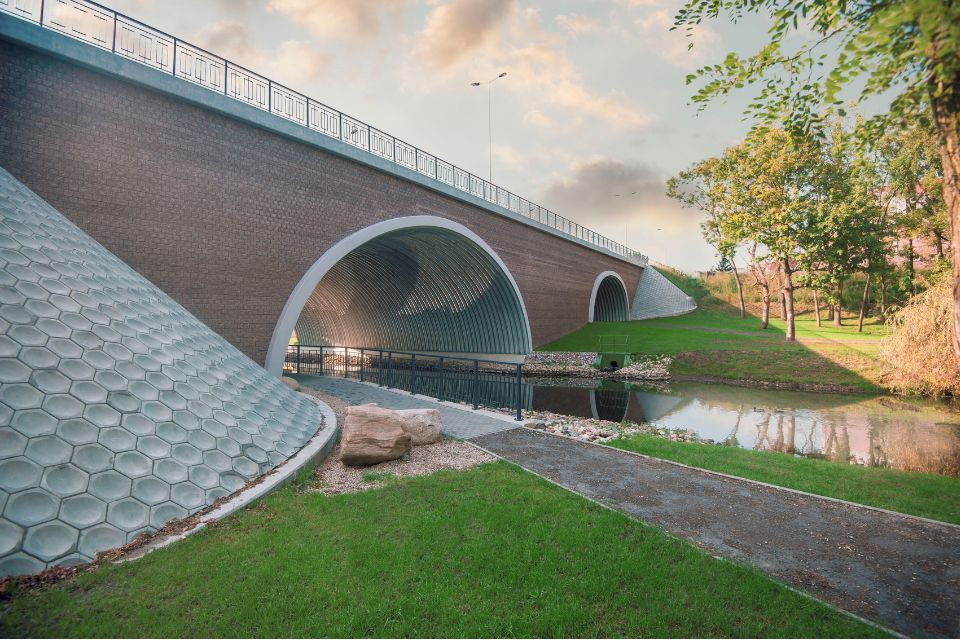What is BREEAM?
The construction and infrastructure businesses are increasingly defined by sustainability as a major concern and a potential regulatory consideration. As such, infrastructure planning and design is becoming driven by questions of how to assess and measure exactly what constitutes sustainable construction and by what benchmarks. BREEAM (Building Research Establishment Environmental Assessment Method) is one of the world’s most recognized methods of assessment, setting the standard for measuring what is considered sustainable – and what that means in practice – for the built environment and infrastructure.
Broadly, the BREEAM assessment framework creates a standardized set of measurements for the environmental performance of buildings. Launched in 1990 in the UK, it has expanded to be used in more than 70 countries. It has become common enough that several European countries have developed country-specific BREEAM schemes “to assess, encourage, and reward environmental, social, and economic sustainability throughout the built environment”. BREEAM principles are applied at design and procurement project stages to measure and evaluate how a construction project will perform environmentally and against best practice.
What is the BREEAM certification process?
The BREEAM certification process consists of a multi-stage approach including feasibility, design, construction and post-construction. The process results in two BREEAM assessments: one during the project design phase and one in the post-construction phase. Initial project registration kicks off a pre-assessment, followed by a design assessment, at which time a design and procurement report identifies issues and at the end of which an interim certification is issued by BRE. In the post-construction phase, a similar process gets underway and a post-construction report is issued. BRE conducts a final review and awards certification to qualifying construction projects.
What criteria do BREEAM assessments look at?
The different stages of BREEAM assessments measure different elements of construction projects to determine their eligibility for certification. These criteria include measures based on the following categories: ecology, pollution, waste, energy, management, water consumption, health and wellbeing, efficiency, materials and transport.
BREEAM scoring consists of a set of rating benchmarks that include outstanding, excellent, very good, good, pass and unclassified. There are minimum standards within each of these rating scores that a project must reach to achieve that rating level. The scoring is more complex than this, but the important point is that there are scores assigned to each of the categories and a weighting system is used to come up with a final BREEAM rating.
What is BREEAM Infrastructure?
BREEAM Infrastructure (formerly CEEQUAL) takes the general BREEAM methodology a step further to specify a rating scheme for measuring the sustainability of infrastructure and civil engineering projects. It is the first global evidence-based sustainability assessment and rating methodology for use in assessing civil engineering, infrastructure, landscaping and public sector projects. It focuses on the same goals as the BREEAM building framework but extends it to public realm works and infrastructure construction to improve sustainability performance at every stage of projects and contracts.
BREEAM Infrastructure categories are slightly different from the categories assessed by the general BREEAM framework.

Why care about BREEAM?
While BREEAM has long been UK focused and governs much of how building is done and classified in the UK (up to 70% of local authorities in the UK require BREEAM certification, for example), it is becoming increasingly important globally (particularly in Europe) as an assessment standard around which the entire construction ecosystem can concentrate efforts on sustainability.
What benefits can BREEAM compliance confer?
- In locations and projects where environmental assessments are required as a part of the design and planning of construction and infrastructure projects, achieving a high BREEAM rating can be a differentiator both commercially and legally (in terms of eventual requirements to comply with regulations). Not complying with BREEAM can be a barrier to carrying out building works or getting contracts/winning tenders.
- As the demand for sustainable buildings and infrastructure grows, a high BREEAM rating automatically confers a higher value and also contributes to a stronger positive reputation for those investing in BREEAM assessments.
- A BREEAM rating can speed up sales cycles as well as improve project efficiency and performance.
- A BREEAM rating can help to scope out the lifespan of infrastructure projects to show the lower total cost of ownership during a project’s life time. BREEAM Infrastructure projects have reported savings from £30,000 to £5 million.
- BREEAM contributes positively to achieving ESG targets and driving sustainability standards across industries.
- BREEAM helps shine a light on sustainable development practices, including minimizing waste and water use, finding more efficient transport options, identifying CO2 emissions reduction areas and improving the environment for wildlife in the surrounding area. Because BREEAM assessments require resource management plans, and BREEAM assessors monitor construction sites to ensure that targets are being met, sustainability starts to become the de facto mode of operation.

